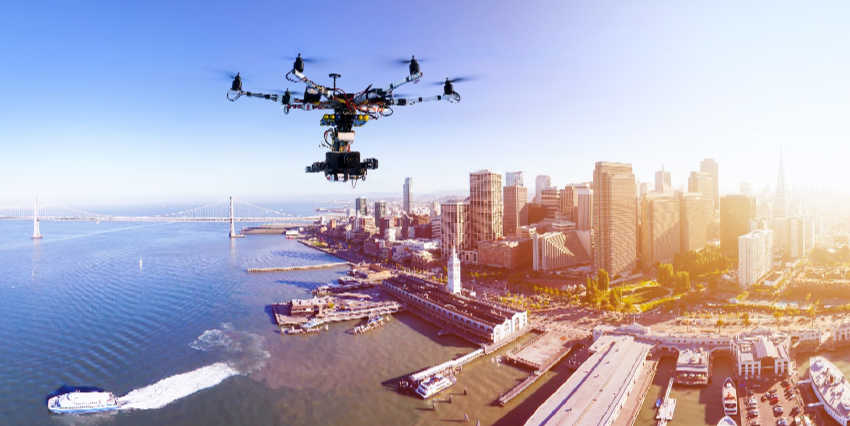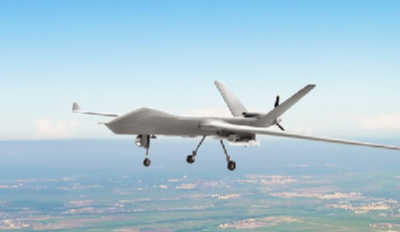For local resources,
choose a city page in Oregon:

UAV Pilot Training in Oregon
UAV pilot training in Oregon is currently one of the hottest trends in aviation. Well, actually UAVs are currently one of the hottest trends in aviation. The military has been operating UAVs abroad and along the borders of the US for quite a while now, but the FAA has been slow-moving on civilian UAVs. Considering that the civilian market is positively teeming with potential, there are several reasons to consider UAV pilot trainingOregon. Civilian UAV pilot training is relatively new.
More than a century ago, two brothers built and successfully flew the first airplane. Before the Wrights' flight, nobody had a need for flight training or pilot certificates. It was a very exciting time in aviation. New developments were made almost daily and by its second decade, aviation was experiencing its golden age.
Among some of that early development were attempts at creating UAVs. Some were marginally successful, but it wasn't until the last few decades that UAVs really became viable. Their development has been predominantly focused on military applications until recently when civilian applications became very attractive.
Much like aviation's golden age, UAVs have reached a critical point in their development where demand for civilian use is dictating the development of regulations and pilots.
UAV Pilot Training in Oregon Prepares You for a Growing Field
There are perhaps hundreds of UAVs currently under development and several more that have a long history in the military. As the only market for UAVs, until recently, the military has been the only provider to offer UAV pilot training inOregon. With the explosive growth of UAVs and the massive list of potential civilian uses, there is no way soldiers coming out of the military pipeline can fulfill all of the industry demand for UAV pilots.
As development continues on UAVs and the FAA considers regulations that will integrate UAVs into the National Airspace System, it is becoming clear that this is a growth industry and now is the time to get in on the bottom floor.
UAV Pilot Training in Oregon Takes Less Time Than Traditional Flight Training
One of the perks of UAV pilot training is that current programs do not require as much flight time as traditional flight training. This is not to suggest it isn't difficult and time-consuming, but it certainly isn't as expensive. A huge component of current civilian training is conventional flight training and knowledge of basic engineering tests. Such a combination pays off by creating ideal UAV pilots for manufacturers who need pilots who can fly and execute proper flight tests of new aircraft.
If all of this sounds exciting and it interests you, perhaps civilian UAV pilot training in Oregon is in your future. Anyone who gets into the industry in the next few years is definitely in for an exciting ride as the FAA establishes regulations for integrating UAVs into the National Airspace System and as manufacturers continue to develop amazing technologies. One thing is certain, however, and that is that the UAV business isn't boring.
Use of UAS Likely to Expand in Oregon
Remotely piloted vehicles and unmanned drones, collectively known as Unmanned Aircraft Systems, have revolutionized the way the military performs certain tasks. Many tasks that are dangerous or simply boring are routinely handled by these devices in today's military. Now, the FAA is facing mounting pressure from civilian and law enforcement agencies to further expand UAS use into the national airspace system.
Some of the characteristics of these aircraft, such as the Predator B's 20-hour endurance, are unmatched with manned aircraft. This makes them very attractive to agencies like the Coast Guard and law enforcement, who regularly use manned aircraft for long search operations, and energy companies, who regularly use manned aircraft to inspect power-lines or pipelines.  The ability of these agencies to use a UAS in place of manned aircraft would represent significant cost savings.
The ability of these agencies to use a UAS in place of manned aircraft would represent significant cost savings.
The FAA has thus far been reluctant to approve widespread use of UAS in US airspace due to concerns about interaction with other aircraft. There are currently hundreds of models of UAS in production, and like all aircraft, they range in size and mission. Additionally, they come in two major varieties: drones and remotely piloted vehicles.
Drones are preprogrammed to follow a specific mission and, once launched, perform that mission free of human interaction. RPVs are piloted by people on the ground, but often these people are hundreds or thousands of miles away. Lost communication is a major concern to the FAA, which fears that a rogue UAS could cause serious problems without proper separation from other aircraft.
According to a recent Associated Press article, Marion Blakey, a former FAA administrator, indicated that the FAA's transition from radar-based air traffic control to a satellite-based system will help ease such concerns. Under this system, known as ADS-B, aircraft will continuously advertise their position.
The point to take away from this is that UAS use will only expand in the near future. Within the next decade, organizations as diverse as state police, tornado researchers, and energy companies could be operating UAS on a daily basis.
Fixed-Wing Aircraft Information
Fuselage: The fuselage is the main structure or body of the fixed-wing aircraft. It provides space for cargo, controls, accessories, passengers, and other equipment. In single-engine aircraft, the fuselage houses the powerplant. In multiengine aircraft, the engines may be either in the fuselage, attached to the fuselage, or suspended from the wing structure. There are two general types of fuselage construction: truss and monocoque.
Fun Facts About Flight Dispatchers
A flight dispatcher can make anywhere between $40,000 and $105,000 a year including benefits such perks as health, dental and life insurance, paid holidays and vacation, free or reduced travel fares are included as well.
